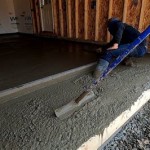How To Build Garage Wall Cabinets In Kitchens
Garage cabinets offer a robust and versatile storage solution, increasingly finding their place within kitchen designs. This approach creates opportunities for maximizing vertical space and incorporating heavy-duty storage for larger kitchen items. Building garage-style cabinets for a kitchen requires careful planning and execution. This guide outlines the essential steps involved in creating durable and functional kitchen cabinets with a garage aesthetic.
Planning and Design
Begin by thoroughly measuring the designated kitchen wall space. Note the height, width, and depth restrictions. Consider the desired cabinet layout, incorporating specific needs like pantry storage, appliance garages, or open shelving. Creating a detailed sketch or using design software helps visualize the final product and ensures accurate material calculations.
Material Selection
Garage cabinets typically utilize sturdy materials. Plywood is a popular choice due to its strength and resistance to warping. For a more economical option, particleboard or MDF (Medium-Density Fiberboard) can be used. However, these materials require extra care to prevent moisture damage. Select appropriate lumber for framing, opting for kiln-dried lumber to minimize future warping. Choose hardware like hinges, handles, and drawer slides based on load-bearing requirements and aesthetic preferences. Determine the desired finish, whether paint, stain, or a clear coat sealer.
Construction: Building the Cabinet Boxes
Cut the chosen cabinet material (plywood, particleboard, or MDF) according to the planned dimensions. Assemble the cabinet boxes using screws and wood glue for maximum strength. Ensure square corners and precise measurements throughout the construction process. Utilize pocket screws for a cleaner, more professional finish. Add reinforcing back panels to provide structural rigidity, especially for larger cabinets.
Framing and Support
Construct a solid frame from lumber to support the cabinets securely on the kitchen wall. Ensure the frame is level and plumb. Use a stud finder to locate wall studs and attach the frame directly to them using appropriate screws. If necessary, add additional wall supports for heavier cabinets or when studs are not readily available.
Installing the Cabinets
Carefully lift and position the assembled cabinet boxes onto the prepared frame. Secure the cabinets to the frame and, if possible, to the wall studs, using sturdy screws. Use shims to ensure the cabinets are level and plumb, both individually and in relation to each other.
Doors and Drawers
Install cabinet doors using appropriate hinges, ensuring proper alignment and smooth operation. Consider soft-close hinges for a quieter, more controlled closure. For drawers, install drawer slides rated for the intended weight capacity. Choose hardware that complements the overall kitchen design and provides comfortable functionality. Add pulls or handles to doors and drawers for easy access.
Finishing Touches
Apply the chosen finish to the cabinets, whether paint, stain, or a clear coat. Multiple coats may be necessary for optimal coverage and durability. Allow ample drying time between coats. Install any additional features, such as interior shelving, drawer organizers, or lighting.
Countertop Installation
Install the countertop material of choice over the cabinets. Options include butcher block, laminate, or even concrete. Ensure a secure and level countertop surface. Seal any exposed edges or seams to prevent moisture damage.
Safety Precautions
Proper safety precautions should be observed throughout the entire construction process. Wear appropriate safety glasses, hearing protection, and a dust mask. Use caution when operating power tools and follow manufacturer's instructions. Ensure adequate ventilation when using paints, stains, or sealers.
Customization and Adaptations
Garage-style cabinets can be customized to fit various kitchen layouts and design preferences. Incorporate open shelving, glass-front doors, or specialty storage solutions like spice racks or pull-out drawers. Consider integrating appliances directly into the cabinet design for a streamlined appearance.
Maintenance
Regular cleaning and maintenance will help prolong the life of the cabinets. Wipe down surfaces with a damp cloth and mild detergent. Avoid harsh chemicals that can damage the finish. Inspect hardware periodically and tighten loose screws or replace worn-out components. Check for signs of moisture damage and address any issues promptly.

Diy Garage Cabinets And Miter Saw Station Jenna Sue Design

Easy Diy Garage Cabinets Angela Marie Made

Diy Garage Cabinets And Miter Saw Station Jenna Sue Design

How To Build Garage Cabinets

5 Diy Garage Cabinets Modular Storage System Fixthisbuildthat

Kitchen Appliance Garage Diy Angela Marie Made

How To Build A Garage Cabinet Storage System Family Handyman

Diy Wall Cabinets With 5 Storage Options Plans Fixthisbuildthat Cabinet Woodworking

5 Garage Cabinets For Ultimate Diy Storage

5 Diy Garage Cabinets Modular Storage System Fixthisbuildthat
Related Posts








